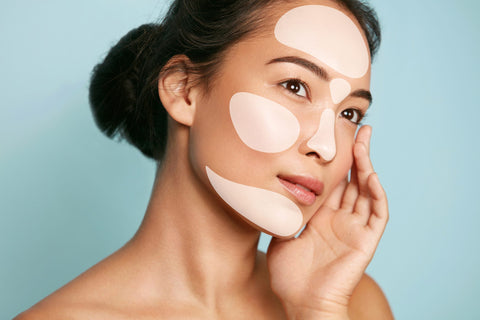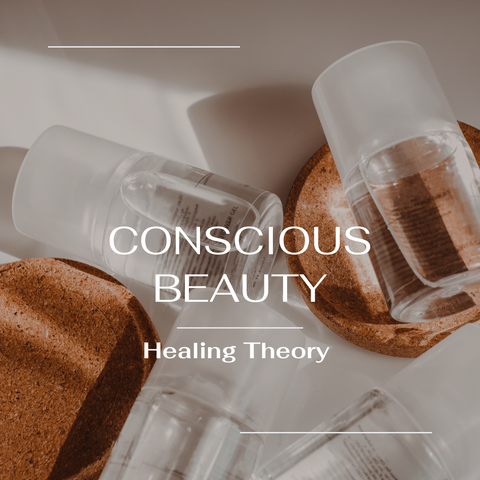If you're similar to many people, you may notice redness and acne breakouts, dry skin, among other indications that your skin's uneven. If you have them, you'll likely ask yourself what could be the causes of these skin problems, and then hope you can find a solution to eliminate the problem completely.
One option you could be interested in is face mapping. This is a concept with a long history which is rooted within both Chinese medicine and Ayurvedic treatment.
Today, people who utilize face mapping techniques tell us that the basic idea behind this technique is that the manner in how acne or redness appear on your face could be an indication of the other issues that are happening in your body, especially in major organs such as the kidneys, your liver and your heart.
What Is Face Mapping?
Face mapping refers to a traditional medical procedure that involves connecting the dots between problems that affect faces as well as general health.
Some experts, like dermatologists who specialise in this area, believe that face mapping as an approach that blends elements from Eastern and Western theories of medicine. It's because it takes into consideration the causes of various facial ailments, including: food allergies, diet, stress levels hormones, genetics, and the type of body constitution/personality (also known as doshas).
Face mapping for acne is one of the most popular methods derived from this idea. The concept is that breakouts of acne which are often seen on certain facial areas like the forehead or the chin are due to specific causes.
Face mapping can also be used to treat conditions like redness, rashes caused by allergies to food and wrinkles, lines, and puffiness.
Face maps may differ in their source, however they typically divide each face into at least 10-zones.
The is a fundamental representation of facial features that can be used to determine causes of skin disorders:
- The forehead is vulnerable to developing blemishes caused due to the small intestinal tract, as and bladder. It could be caused by stress that isn't controlled and digestive issues. Lack of sleep
- breakouts that appear between or over your nostrils or your eyebrows and are believed to signal an issue with your kidneys, stomach, the spleen, or bladder. When acne appears on the nose and around the nose, it could be a sign of digestive problems and swelling within the small intestinal.
- A wrinkle or lines between your eyebrows particularly on your right side could indicate that you're suppressing emotions, such as anger. This could be due to a weak function of your liver and may need the act of forgiveness, according to Traditional Chinese Medicine.
- A wrinkle or lines on the left side of your eye could be caused by problems in the functioning of the liver or spleen.
- Lines that break out or exceed the eyebrows could suggest an issue in the function of your heart.
- The appearance of eye puffiness is believed to be caused by a lack of kidney function.
- Acne can be observed on the chin, around the mouth and also on the jaw, it is believed to be caused by the hormonal imbalance, as in the colon or stomach. When acne is visible under the lips and beneath the lower cheeks it may indicate an issue with the digestive system. working properly, including the spleen and it's kidneys..
- The red cheeks may be an indication of a problem in the stomach, liver and the lungs. It could also indicate an immune response to respiratory conditions or allergies.
- Red noses may be an indication of heart-related problems including high blood pressure or inflammation
- The irritation you feel on your neck could be an indication of stress, which can affect immunity.
-
What Science Says - Do you believe that face mapping is a viable method to treat conditions such as acne and rashes?
In the final analysis, the evidence of science does not exist to demonstrate it. Ayurvedic as well as Chinese Face mapping can be useful and efficient for the majority of people. There is research which suggests that certain kinds of skin problems on the face that occur in certain places, such as irritation or acne around the cheeks and chin could be a sign of issues like hormone imbalances or stress. It could also be an indication of the immune system.
A research study from 2018 also states it is "Distinct regional differences in transepidermal water loss (TEWL), capacitance, blood flow, sebum, pH and temperature are demonstrated in facial skin" This means that particular facial areas can be affected by certain lifestyle changes.
The most recent dermatological research indicates the causes of skin diseases that appear on the face.
- Imbalances in hormones. such as the excessive levels of hormones androgenics, for example, testosterone
- High stress levels
- The production of oil is very high especially on the "T-zone," which consists of your forehead, nose, and your chin
- Poor sleep habits
- Inadequate hygiene permits sweat, oil dead skin cells, as well as bacteria spores to multiply
- Gut health is poor, and this is a result of the absence of probiotics which are beneficial
- Immune reactions and allergies
- The reaction or irritation makeup, skincare and other items for the hair
- Genetics
- Sun exposure
- Poor circulation
- Inspiring illnesses like diabetes or heart disease
- Exposition to the environment irritating substances

A lot of the issues discussed above can be solved through face mapping treatment protocols . The majority of dermatologists recommend that before switching to face mapping to assist, first review the basics of washing your face regularly with gentle, appropriate products and wear SPF when exposed to the sun or suffer from skin issues and get rid of any allergens you can identify in your everyday routine.
If you're already maintaining a healthy lifestyle and eating nutritious food but are suffering from symptoms that are persisting, be thinking about consulting a doctor who is skilled in face mapping for more help.






